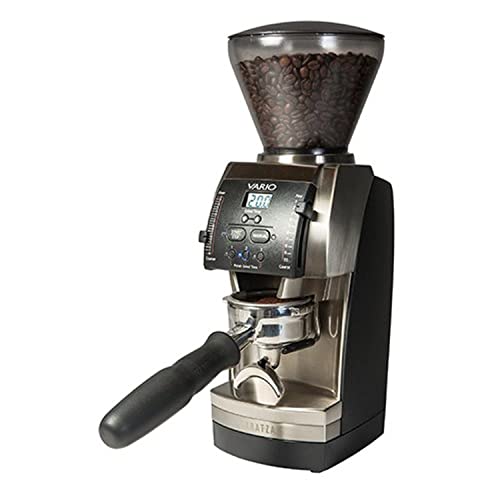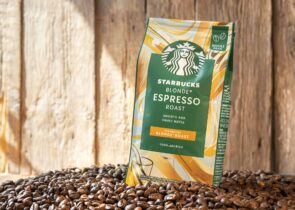If you brew coffee at home and you’re buying it in whole bean form, then you’ll need a dependable grinder to break down your beans.
But how do you know what grinder is best? There are many different kinds of coffee grinders on the market today, but burr grinders are some of the most popular among coffee fanatics. That being said, there are two different kinds of burr grinders: conical and flat.
If you’re wondering about the differences between them, you’re in luck! Read on to find out which is best for your brewing needs.
Why Do You Need A Grinder Anyway?
Obviously, whole beans can’t be used to make coffee because they won’t hold and filter water accurately. If they’re broken down into grounds, their smaller, more compact size allows for accurate flavor extraction because it’s harder for the water to slip between them. Furthermore, not only does your coffee need to be ground in order to brew, but the size of the grind also matters as well.
You may not even need a grinder, but you may end up wanting one because let’s face it: freshly ground coffee is always the best coffee. When you grind coffee prior to brewing, the grounds will hold more flavor and aroma because they haven’t been subject to oxidation, moisture, or the elements in general.
Grind Size
The size of the grounds also matters because they determine what drinks you can make. Grind size ranges from extra-fine to coarse in size. The finer the grounds, the smaller/thinner they are, making it harder for water to filter through them. On the other end, coarser grind sizes are thicker, making it easier for water to slip through.
A fine grind resembles small grain, almost powdery texture, and is ideal for brewing Turkish coffee, espresso, and Moka-pot coffee. In contrast, coarser grinds are ideal for brewing methods such as pour-overs, the French press, cold-brewing, etc.
What are Burr Grinders?
Burr grinders consist of two oscillating blades that are serrated (hence the name “burr”). Instead of cutting or slicing the beans, burr grinders actually grind the beans together in order to break them down into little pieces. They are a huge favorite of many professional baristas because burr grinders allow for flexibility with grind sizes, as well as producing grounds that are uniform in size.
Not only does it create a consistent grind size, but it also aids with the oil extraction from the beans, ensuring that you receive the best flavor possible.
What is a Conical Burr Grinder?
Essentially, the primary difference between the conical and flat burr grinder is the shape of the rings and blades. Conical burr grinders consist of two cone-shaped rings that are bladed, one facing upward, the other facing downward. As the beans travel between the blades, they are not sliced but are “chewed” down by the burrs in order to form grounds.
There are also several benefits to the burr grinder that many coffee lovers enjoy. They provide a high level of control over the grinding process and also do a great job of maintaining low heat levels, which is important because the oils in your grounds are very vulnerable to sudden increases in temperature. Conical burrs are also much quieter and require less amount of energy levels to operate.
What is a Flat Burr Grinder?
Unlike a conical grinder, a flat burr grinder has two horizontal blades, one facing upwards and the other facing downwards. Coffee beans are fed between the burrs and are ground before dropping down between them again, making two 90 degree turns.
However, the downside of flat burrs is they produce more heat than conical burrs, as well as a larger amount of noise. Furthermore, they also use a high amount of energy, which may cause a problem if you’re trying to maintain your energy splurging.
Conical vs Flat Burr Grinder
Now, let’s take a closer look at the differences between them. Though they can both get the job done, these two grinders are very different in how they operate. To the naked eye, the grounds from a conical burr and a flat burr look the same. However, holding them up under a microscope reveals that they produce vastly different results, and it all comes down to different grinding techniques.
Conical Burr Grinding
For a conical burr grinder, the coffee beans slide in between the blades at a somewhat vertical position, naturally forcing them downwards. The conical burr shape uses an outer serrated burr and an inner cone-shaped burr. While the center burr spins, the beans are pulled into the sharp grinding area, breaking down into smaller pieces.
The conical grinding method actually creates something called bimodal distribution. These grounds look uniform to the naked eye, but they actually consist of two different sizes: one smaller and one larger in size. And yes, consistency matters, however this design for the conical grinder actually works beautifully for brewing espresso. The smaller particles help restrict water flow, while the larger grounds encourage it, balancing the flow of water, resulting in a smooth, strong shot of espresso.
Flat Burr Grinding
Where flat burrs are concerned, the blades are allowed to physically interact with each other more than a conically shaped burr. Due to the movement of the burrs, the beans are filtered between them in a different way, resulting in unimodal distribution. This form of distribution results in grounds that are all one shape, unlike the grounds created by a conical burr grinder.
Since the burrs are parallel, it’s easier for grounds to get caught in between them. The more grounds that your grinder retains, the more coffee you’ll end up going through andwasting. As a result, flat burrs tend to generate more heat and can be quite noisy when grinding. For some baristas, however, the benefits of the unimodal distribution outweigh the cons, still making it a very popular choice.
Things To Consider When Shopping
So, it’s time to put your knowledge of conical and flat burr grinders to the test! But before you begin your shopping spree, here are some important determining factors that you should keep in mind.
Manual or Automatic?
This is one of the most immediate characteristics of your grinder that you need to keep in mind before buying. If you’re traveling a lot or you’re making coffee in small amounts, then a manual coffee grinder may be best. However, if you’re looking for a more convenient, exquisite, simpler method of grinding coffee, then you should consider some automatic options. An automatic grinder can be a great fit because it can allow you to grind a large amount of coffee at once with ease.
Material
Before purchasing a grinder of any kind, it’s important to make sure you know what the grinder is made of. Obviously, the cheaper the material, the less durable it will be, and vice versa. Material like ceramic will stay sharp for a longer amount of time if taken care of properly, but material like metal may do a better job of keeping extra heat away from the beans while grinding.
Consistency
When it comes to your grinder producing usable, high-quality coffee grounds, consistency is key. The performance of your grinder is heavily based on how well it’s able to produce different grind sizes. If your grinder produces a grind that consists of some grounds that are too coarse and others that are way too fine, this will negatively impact how well you’re able to brew. If your grinds are too inconsistent, the brewing process and brewing time will be off, since finer and coarser grinds extract flavor differently.
Price
How much are you willing to spend on your grinder? Prices can depend on a variety of things, whether it’s manual/automatic, the material the grinder is made of, and more. Ultimately, the main factor that will determine this is what the exact reason for the grinder is. The larger the burrs in the grinder, the more expensive the grinder may be. This is primarily because the larger your burrs are, the more coffee beans you can grind. Professional baristas and most coffee shops have larger, more expensive burr grinders just for this reason.
The Verdict
At the end of the day, the most important qualities that you want to consider for your grinder are grinder consistency and waste. If you’re looking to pull the best espresso shot possible, then a conical might be for you. Or if you’re doing brewing styles other than espresso, a flat burr will suffice. In addition, conical grinders are cheaper, quieter, and are more efficient for baristas who do a large amount of espresso brewing. However, for those brewing with a variety of methods in the comfort of their own home, a flat option might be the better choice.
Regardless, both grinding styles are effective and reliable but deciding which is best for you really just depends on what you need out of a grinder. So have fun shopping around, and as always:
Happy caffeinating!










